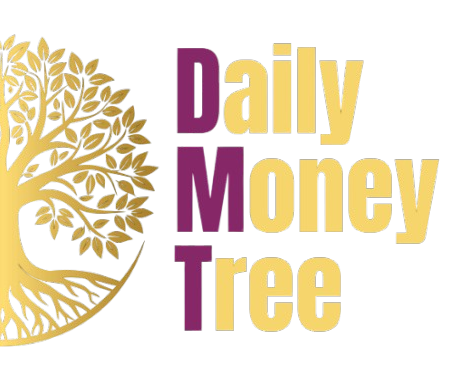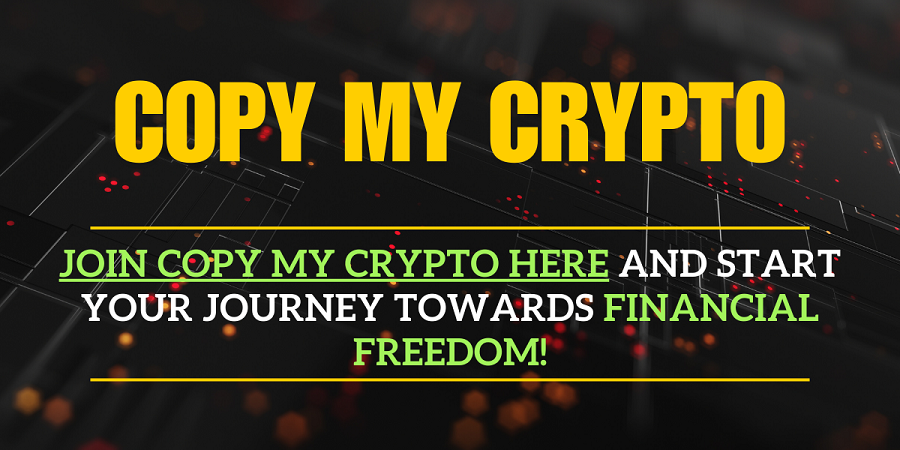Is Cardano a good investment in 2022? Absolutely! ADA is one of the strongest cryptocurrencies out there with an amazing team behind it. It is also one of the most undervalued coins which has been stagnant for far too long. It is now time for Cardano to make its run towards new all-time highs.
What is Cardano?
The Cardano project was born in 2015. The company behind its development, called Input-Output Hong Kong (IOHK), is run by BitShares and Ethereum co-founder Charles Hoskinson.
This is certainly not an experimental project in the world of cryptocurrencies, but the result of some commitments already recognized in the same cryptocurrency ecosystem. Cardano’s goal is to create a blockchain that can work much better than the old blockchains, such as that of Ethereum, by processing more transactions, cheaper and faster.
In this sense, Charles Hoskinson has always said that Cardano is a third-generation blockchain, while Bitcoin and Ethereum are actually – respectively – first and second-generation. Therefore, rather than copying the code of other blockchains, IOHK created its new blockchain, renaming it Cardano.
People sometimes think that Cardano and ADA are the same, but there is a small difference. Cardano is the name of the blockchain that allows people to send and receive funds. ADA is instead the name of the cryptocurrency.
However, when referring to the possibility of investing in this currency, for convenience we are referring to investing in Cardano, rather than ADA. If you think about it, this is a bit like what happens with Ethereum: Ethereum is the name of the blockchain, while Ether is the name of the cryptocurrency.
Or, again, it is the case of Ripple, with Ripple being the name of the blockchain, and XRP is the name of the cryptocurrency.

Is Cardano a good investment in 2022 – Advantages and Disadvantages
So let’s try to summarize the pros and cons of Cardano.
Let’s start with the advantages:
- excellent development team, with its founder who has already been an integral part of successful projects, such as BitShares and Ethereum;
- first multi-layered blockchain;
- no limits to scalability;
- ADA cryptocurrency able to offer cheap and fast transactions.
The cons are:
- Cardano is still under development;
- other blockchains, such as Ripple, Fantom and NEO, are already faster.

Cardano: 2022 trend and forecasts
If we want to determine is Cardano a good investment in 2022, we must first take a look at its history.
2020 was for Cardano a year characterized by a constant lateral trend. Unlike what happened with many other cryptocurrencies, Bitcoin in the lead, the ADA token did not experience particular shocks, except for that famous March 13 when the financial markets collapsed.
On that date, Cardano experienced an important drop, which halved its value from 0.040 to 0.023.
In the final phase of the year, however, an interesting oscillatory movement began which prepared the ground for the almost vertical take-off that accompanied the first months of 2021. The value since March 13 has increased 20 times in early February, with ADA settling on a value of 0.82.
But these performances were only the beginning: during the year Cardano continued to climb positions, reaching a maximum of $ 2.97.
The general sentiment has increased its volume dramatically, seeing social media mentions grow by the day. All this goes to the detriment of Ethereum, with Cardano climbing positions on the ranking by market capitalization, where it now occupies the fourth position.
In practical terms, integration with smart contracts will allow the use of decentralized finance protocols.
Despite a phase of decline, therefore, Cardano’s prospects for 2022 are positive, to the point that its average target price is given a sharp rise, with the aim of finally breaking through the $ 3 ceiling.
Is Cardano a good investment in 2022 – How Does ADA work?
The mechanism underlying the blockchain can be divided into two different levels.
- The so-called settlement layer , built and already fully operational, which allows users to send and receive ADA cryptocurrencies, from wallet to wallet. This is a level of operation that is similar to the way users can use to be able to transfer Ethereum between them;
- the so-called computation layer, which is a further level of calculation still in the process of being perfected, which allows users to create and stipulate smart contracts.
Precisely this double level contributes to making Cardano different from other cryptocurrency projects, which normally operate on a single layer. By using two separate layers, however, there are some potential benefits for Cardano users.
First, the compute layer is more adaptable than that of Ethereum, as small changes can be made for different end-users. For example, since different countries have different regulations, Cardano can change the way in which data is stored and accessible depending on the relevant laws of the territory in which it operates.
This also means that even if users of the ADA cryptocurrency can remain private, Cardano can always ensure that they comply with national regulations. The compute layer is also useful for making soft forks without interruption, which the old blockchains have failed to do.
To explain even more clearly what Cardano works at the smart contract level, let’s take an example.
Let’s imagine that John has to pay his consultant, George, for a professional service.
At this point, John enters into a smart contract which is stored in the blockchain. The agreement establishes that as soon as George has made the service in favor of John, the agreed funds will be released and destined for George’s wallet.
When this happens, the smart contract is transferred from the settlement layer to the computation layer, which allows George to be paid in ADA cryptocurrency. All this takes place in a completely automated way, without the need for a third party.
Easy, right?
The blockchain
The Cardano blockchain allows you to create smart contracts, just like the Ethereum and Ethereum Classic blockchain. Smart contracts allow two or more people to enter into a contract without the need for a third party. This means that once the predefined conditions are met, everything else is automated.
Like most other blockchains, Cardano is decentralized. That is, it is not controlled by a single authority. On the contrary, smart transactions and contracts are verified by the community, which does so by contributing its own computing power. However, Cardano does things in a technically different way to Bitcoin and Ethereum. Since this is not our focus, we will not go too far into technicalities.
Instead, we emphasize how, in order to support the fundraising for the development of the Cardano, the team raised 63 million dollars during its ICO. Since then, the growth in the value of the project has been almost unstoppable.
Verification of transactions
Cardano’s platform is decentralized. Thus, no single authority has control over the network. And this, in other words, means that – as happens with the Bitcoin and Ethereum network – the blockchain is managed by miners.
However, Cardano uses a different model, which he calls “ Ouroboros “. Before explaining how it works, however, it is useful to make a small premise to quickly explain how other blockchains are different, such as that of Bitcoin.
In fact, remember that Bitcoin uses a consensus model called ” Proof-of-Work “. To help authenticate a transaction, miners use their computing power to solve some rather complex calculations. Think of it as if it were such a difficult mathematical equation that no human being could solve it on their own.
Whichever miner solves the computation problem first will get a Bitcoin reward. The problem with Proof-of-Work, however, is that, as computational problems become more and more complex, miners need to use more and more electricity.
Well, the Cardano network instead confirms transactions using a consensus mechanism called Proof-of-Stake. In this scenario, people who wish to contribute to validating transactions are called validators, not miners. To take action, validators must “freeze” some of their ADA coins. Once a validator helps verify a transaction, they receive an additional ADA cryptocurrency as a reward. The higher the “stakes”, the more chances a validator has of receiving the reward provided by the network.
This system is much more efficient and environmentally friendly than Proof-of-Work, as it requires much less electricity. It also means that transaction fees are lower.
While there are other Proof-of-Stake blockchains available as well, Cardano’s team argues that none offer a truly random way of selecting a validator. And this is why Cardano has made the Ouroboros protocol in addition to the standard Proof-of-Stake model, thus ensuring that everyone can get the reward.

The Daedalus wallet
When it comes to keeping your ADA cryptocurrency, Cardano has its own official wallet, called Daedalus. However, we cannot ignore the fact that there are many reports from the cryptocurrency community that underline the problems of Daedalus, such as the occasional inability to connect to the network, synchronization blocks, and transactions that do not reach the recipient.
Of course, Cardano is well aware of all this and is working hard to perfect its wallet.
Is Cardano a good investment in 2022 – The Scalability of Cardano
In the cryptocurrency and crypto industry, scalability is the number of transactions a blockchain can process in a certain amount of time, or ” transactions per second “.
Well, older blockchains like Bitcoin and Ethereum have big scalability problems because they are very limited in the number of transactions they can process at one time. In fact, Bitcoin can only process 7, while Ethereum processes a maximum of 15. Also, in this case, Cardano shows a considerable competitive advantage. But why?
Let’s try to explain it in a simple way. When transactions are verified on the Bitcoin blockchain, they remain on the public ledger forever. This means that over time, the ledger on the blockchain becomes bigger and more difficult to manage.
The problem, in fact, is that every single miner on the network must keep a copy of every single transaction. This causes noticeable scaling problems, which Cardano is trying to solve.
Cardano, in fact, is powering a blockchain that does things differently, separating data that is not relevant to the people involved in the transaction.
The team is also trying to install a protocol called ” Sharding “. The way it works is that, as more and more people use the network, the number of transactions per second is able to increase.
How to use ADA
If you’ve read our guide carefully, you should probably have understood that Cardano is a rather complex project. The team is working on many aspects of use at the same time but, however, nothing prevents us from imagining that the uses of the project are at least two.
First of all, ADA can be used in the same way Bitcoin was conceived, i.e. as a global payment system. However, as already mentioned, Cardano is able to do much better than Bitcoin in terms of speed.
The second main function of the ADA cryptocurrency is to allow people to create smart contracts and dApps (decentralized applications), as long as the project actually manages to correct its scalability problems.
If Cardano were to really be able to achieve these goals, then its technology would be perfect for everyday applications, as it would be nearly impossible for people to hack the technology.
Conclusions
So, Is Cardano a good investment in 2022? Without a doubt!
It most certainly is among my top 5 cryptocurrencies at this moment, and it makes a significant portion of my portfolio.
Cardano is one of the best projects in the crypto landscape with one of the most amazing teams working on it.
If you want to find out which other cryptocurrencies are the best investment opportunities in 2022, you can check out Copy my Crypto.
To your success!
DailyMoneyTree





